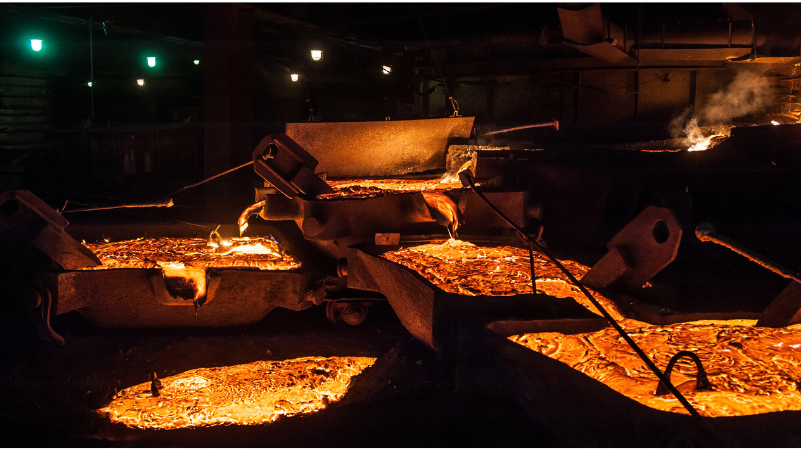Views: 0 Author: Rachel Wynn Publish Time: 2025-05-30 Origin: Site











Titanium is a lightweight, high-strength metal that is increasingly vital across aerospace, medical, and industrial sectors. One of its most important properties is its exceptionally high melting point, which directly influences its processing techniques, applications, and market value. Understanding the melting point of titanium is critical for engineers, metallurgists, and procurement specialists seeking durable materials for high-temperature and corrosive environments.
The melting point of commercially pure titanium is approximately 1,668°C (3,034°F). This high temperature threshold places titanium among the top-performing structural metals used in extreme environments. Titanium’s melting point is a key factor behind its stability under thermal stress, its oxidation resistance, and its suitability for high-performance applications.
The following table summarizes titanium’s essential physical and thermal characteristics that relate to its melting behavior:
| Property | Value | Unit |
|---|---|---|
| Melting Point | 1,668 | °C (3,034°F) |
| Boiling Point | 3,287 | °C |
| Thermal Conductivity | 21.9 | W/m·K |
| Specific Heat | 0.52 | J/g·K |
| Density | 4.51 | g/cm³ |
| Crystal Structure | Hexagonal Close-Packed (HCP) | — |
These thermal characteristics explain why titanium is often chosen for components that need to maintain performance under rapid heating or prolonged exposure to high temperatures.

Let’s explore how titanium’s melting point compares to other commonly used metals in aerospace, construction, and manufacturing:
| Metal | Melting Point (°C) | Melting Point (°F) | Application Example |
|---|---|---|---|
| Aluminum | 660 | 1,220 | Automotive parts, beverage cans |
| Iron | 1,538 | 2,800 | Construction, machinery |
| Nickel | 1,455 | 2,651 | Battery cathodes, turbine blades |
| Titanium | 1,668 | 3,034 | Aerospace structures, implants |
| Tungsten | 3,422 | 6,192 | Filaments, military armor |
While pure titanium has a stable melting point, its alloys—engineered for different performance characteristics—often display melting ranges. Here are several widely used titanium alloys and their approximate melting ranges:
| Alloy Grade | Composition | Melting Range (°C) | Primary Use |
|---|---|---|---|
| Ti-6Al-4V (Grade 5) | 6% Al, 4% V | 1,600–1,665 | Aerospace, implants, marine |
| Ti-3Al-2.5V (Grade 9) | 3% Al, 2.5% V | 1,610–1,665 | Hydraulic tubing, bike frames |
| Ti-0.2Pd | 0.2% Palladium | 1,630–1,670 | Corrosive chemical environments |
The high melting point of titanium presents both advantages and challenges during manufacturing:
Welding: Titanium must be welded in a shielded argon environment to prevent embrittlement caused by oxygen, nitrogen, or hydrogen contamination.
Forging and Casting: Requires high-energy furnaces and often vacuum/inert gas conditions, raising processing costs.
Machining: Titanium has a low thermal conductivity, causing heat to concentrate at the tool tip, which leads to tool wear and the need for specialized cutting techniques.
Thanks to its melting point and corrosion resistance, titanium is preferred in environments where performance under heat and chemical attack is essential:
Aerospace: Jet engines, structural components, and rocket casings.
Medical: Sterilizable implants, surgical tools, dental hardware.
Marine: Propellers, seawater heat exchangers, submarine hulls.
Energy: Power plant condensers, nuclear reactor linings, geothermal systems.

It allows titanium to retain its strength and chemical stability in extreme conditions, making it ideal for aerospace, defense, and industrial applications where heat resistance is critical.
No. Titanium reacts aggressively with oxygen and nitrogen at high temperatures. It must be melted under vacuum or inert gas (like argon) to prevent contamination and embrittlement.
While aluminum is cheaper and lighter, its low melting point (660°C) makes it unsuitable for high-heat applications where titanium excels due to its higher melting threshold.
Yes. Alloying elements can slightly lower or broaden the melting range depending on their concentration and phase structure. This affects processing temperatures and performance behavior.
Very well. Titanium’s high melting point, low thermal expansion, and strength at elevated temperatures enable it to endure thermal cycling better than many other metals.
Understanding the melting point of titanium is vital for industries that depend on thermal stability, corrosion resistance, and mechanical integrity under extreme conditions. Its high melting temperature of 1,668°C not only defines how titanium is processed, but also unlocks its potential across aerospace, medical, energy, and marine sectors. Whether you are selecting materials for a jet engine or a surgical implant, titanium's melting behavior is a core performance factor that ensures safety, longevity, and reliability.






